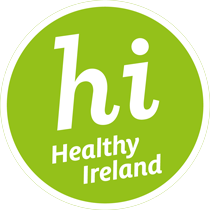You are here
Considerations of Report into series of neonatal subgaleal haemorrhage cases in University Hospital Galway published
In 2022, nine cases of neonatal subgaleal haemorrhage occurred in University Hospital Galway and were reported to the Saolta Group Women’s and Children’s management team.
While this increase was well within the reported range in the international literature, the management team decided to undertake an audit of the cases in order to provide insights into trends, root causes, and potential areas of improvement.
The audit found that apart from the occurrence of instrumental vaginal delivery, there were no other apparent causative factors. Different senior obstetricians were present at all deliveries, including members of the consultant staff.
GUH had a clinical guideline in place since November 2020 to provide advice to staff regarding the detection and management of potential subgaleal haemorrhage in the newborn.
These infants were admitted to the neonatal unit for observation. Two infants required a short course of phototherapy for neonatal jaundice. Two of the infants experienced skull fractures along the occiput. None of the infants had hypovolaemia, tachycardia, hypotension or a requirement for blood transfusion.
No infant had a seizure, abnormal movements nor an abnormal suck or gag reflex. All of the infants were well on discharge.
This prevalence of neonatal subgaleal haemorrhage in GUH (2.6% of ventouse deliveries) was within published accepted limits (Levin et al Eur J Obstet Gynaecol Vol 245, 2019, which reported a rate of 4.4%).
All of the GUH cases were considered mild. It is also acknowledged that the prevalence of this condition may vary with how closely it is examined for.
While the audit had not identified any specific issue of concern, a decision was made by the Saolta Group Women’s and Children’s Clinical Director to seek the assistance of the National Women’s and Infant’s Health Programme to complete an independent clinical care review of all the 9 cases.
The review team visited the hospital on 27th April 2023. The case notes, imaging details, collated database of obstetric and neonatal histories were made available to the team. Case summaries were presented, and multidisciplinary professionals from GUH site were available for provision of information. The independent clinical care review was finalised in September 2023 and sent to the commissioner.
On receipt of the independent clinical care review report Saolta established a local management team to further manage this matter. The team was put in place in order to facilitate surveillance of this matter, to address relevant clinical issues, and to coordinate communication with the families. It continues to meet on a regular basis. The review team provided the management in UHG eight points for consideration. Each of the eight considerations have been fully implemented.
There has been no further recurrence of a cluster of cases of neonatal SGH since that time.
Plans were put in place to ensure full open disclosure with the parents. All parents were provided with a concise clinical review of care specific to their case, and a copy of the independent clinical care review report conclusions and considerations. All parents were offered a scheduled visit with 3 members of staff as follows, referred to as a clinical team: a Consultant Obstetrician Gynaecologist, a Senior Midwife (Director or Assistant Director of Midwifery), and a Consultant Neonatologist. They were also provided with the details of a named coordinator to assist them with the process.
The considerations included in the report are as follows:
Consideration for Senior Management
1. The group of women in labour, being induced and self-admitted in labour but not yet “established “should be under the care of the consultant on call.
2. The role of the consultant on call needs clarification; does that person make themselves available for matters escalated only or are they responsible for the management plan of the women?
3. The handover of care should be structured to include all patients in the above categories and have a formal structure.
4. A lead consultant for labour ward management should be appointed who will ensure the implementation of all agreed policies.
5. An accurate initial head circumference (H.C) is in important in order that the H.C can be optimally used as a tool to monitor the haemorrhage.
6. Ultrasound should be the initial choice when imaging is considered necessary. The advantages are that it can be undertaken at the cot side and it avoids radiation.
7. The Department should develop a formal guideline of the management of Neonatal subgaleal haemorrhage
8. The Galway Clinical Management requested external review although no baby died or suffered long term damage; this demonstrates a firm commitment to quality improvement. The Obstetric and paediatric teams might consider prospectively identifying adverse outcomes from term labour (i.e. meconium aspiration, hypoxic and traumatic injury) and reviewing this cohort at the end of the year to see that issues identified in this review have been addressed.
ENDS

